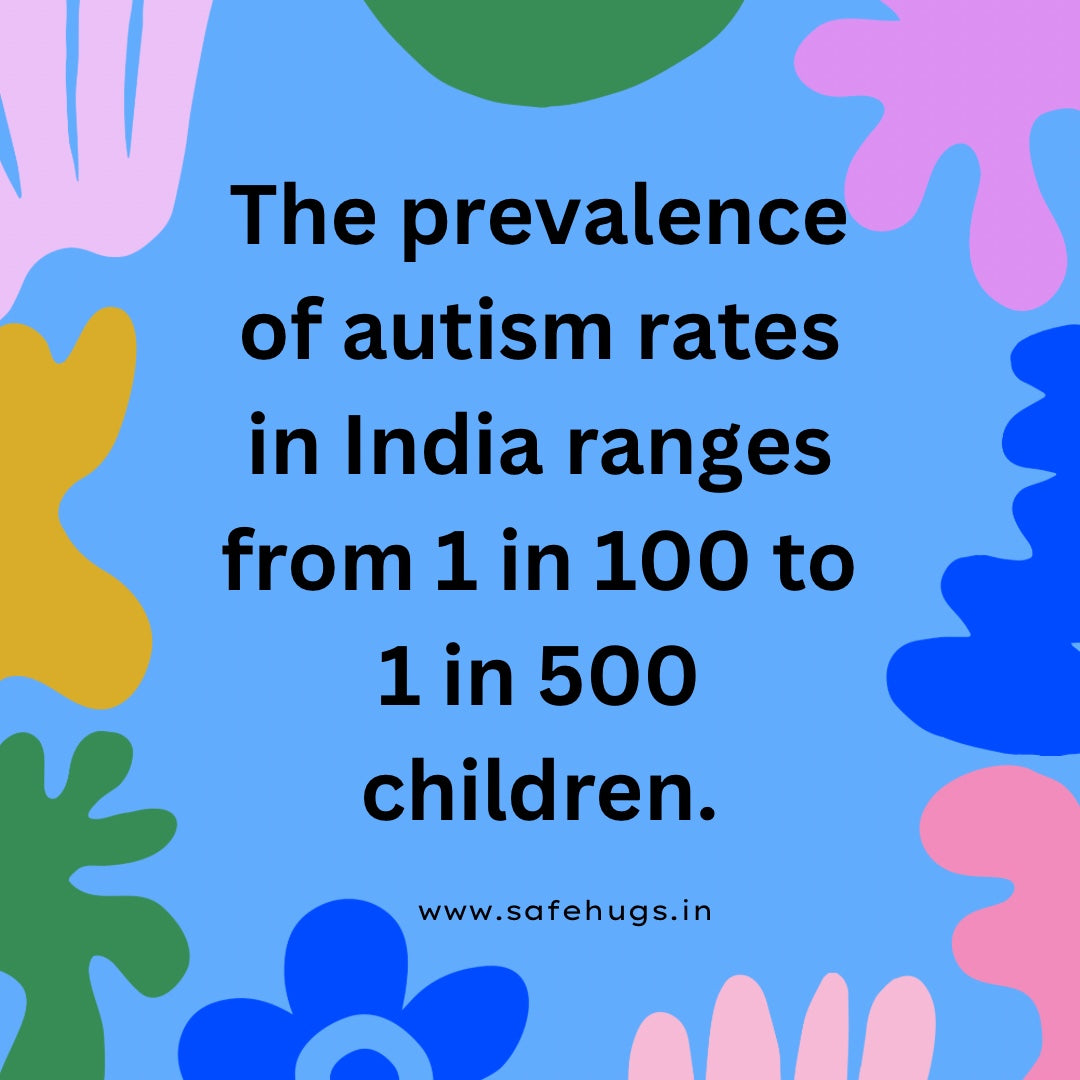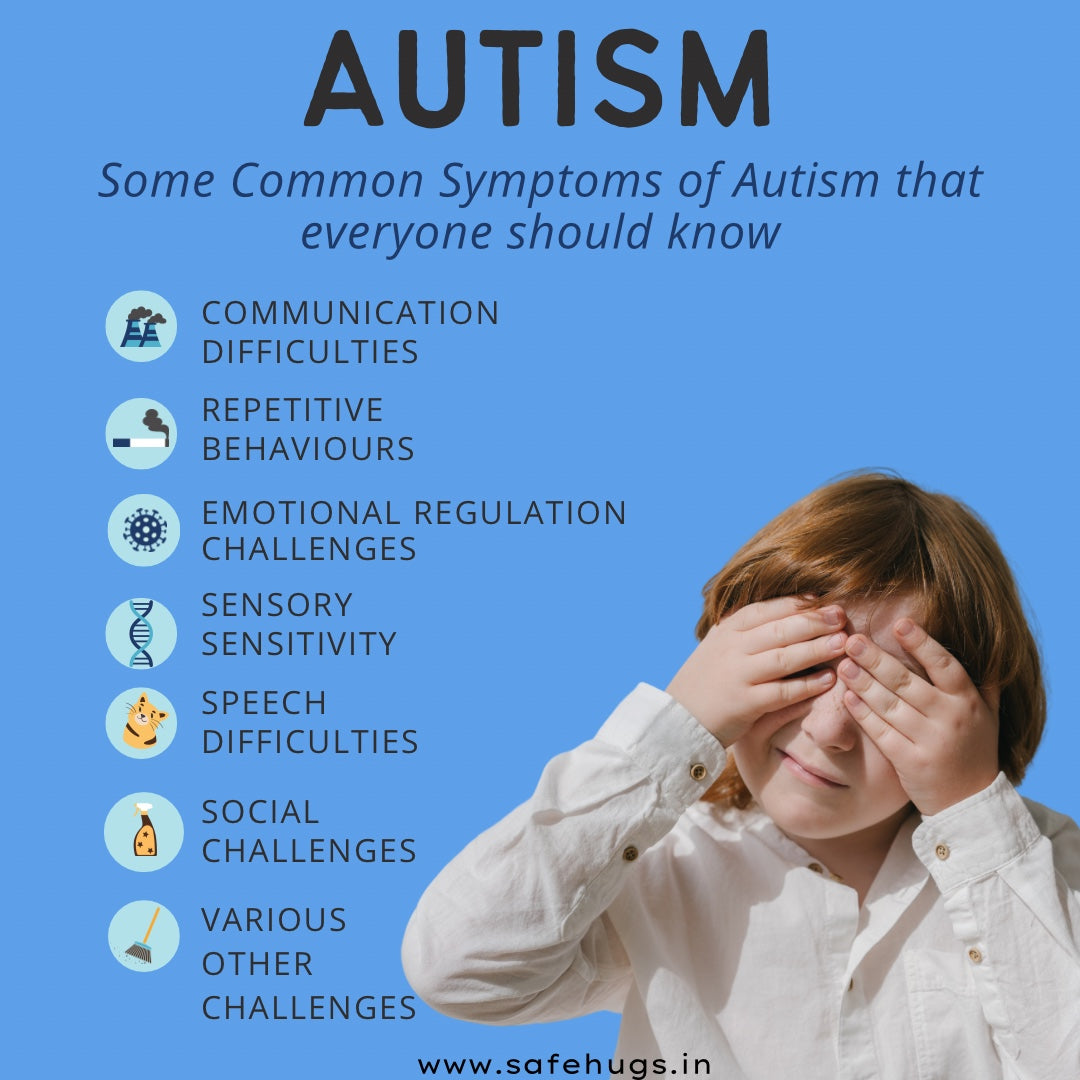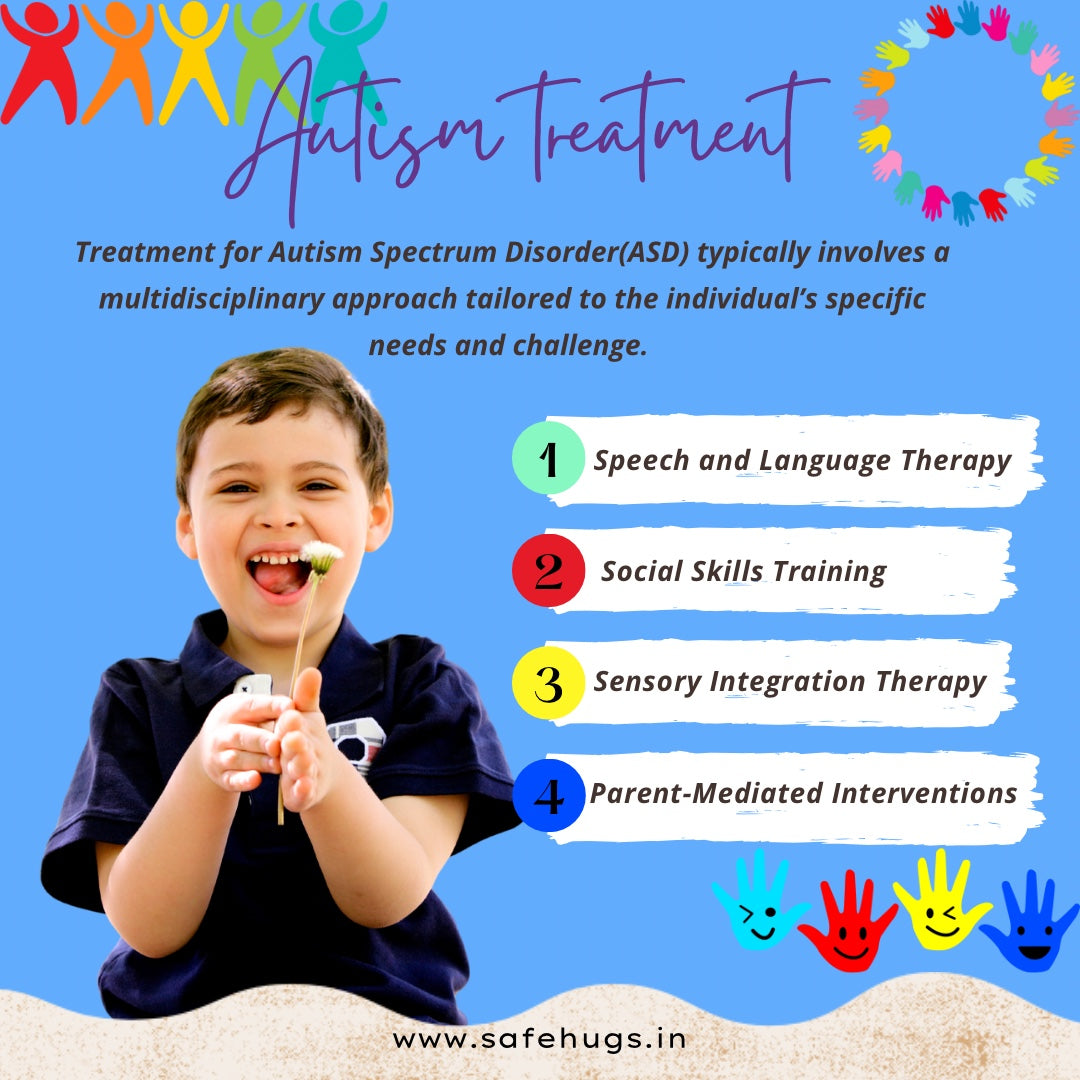Understanding Autism ( Real Life Examples )
"The most beautiful things in the world cannot be seen or touched, they are felt with the heart. This includes the beauty of individuals with autism."

Welcome to our in-depth guide on Autism spectrum disorder (ASD). As awareness and understanding of autism continue to grow, it's crucial to provide accurate information and support for individuals on the spectrum and their families. In this blog, we'll explore what autism is, common myths and misconceptions, strategies for support and inclusion, and real-life testimonials and experiences from individuals living with autism and their loved ones.
Understanding Autism:
Autism, Autism spectrum disorder (ASD)., is a developmental disorder that affects communication, social interaction, and behavior. It's important to recognize that autism is a spectrum, meaning individuals can experience a wide range of strengths and challenges. From nonverbal communication to sensory sensitivities, each person's experience with autism is unique.
Dispelling Myths and Misconceptions:

"Autism is not a disability, it's a different ability." - Stuart Duncan
Before delving into strategies for support, it's essential to address common myths and misconceptions surrounding autism. From the belief that all individuals with autism have exceptional talents to the misconception that autism is caused by vaccines, debunking these myths is crucial for fostering understanding and acceptance.
#Myth: Autism is caused by vaccines.Fact: Numerous scientific studies have debunked this myth. There is no link between vaccines and autism.
#Myth: All individuals with autism have extraordinary abilities or savant skills.Fact: While some individuals with autism may possess exceptional talents, such as in music or mathematics, not all individuals on the spectrum have savant abilities.
#Myth: People with autism cannot feel or express emotions.
Fact: Individuals with autism may express emotions differently, but they are capable of experiencing a wide range of feelings and forming deep emotional connections.
#Myth: Autism only affects children.
Fact: Autism is a lifelong condition that persists into adulthood. While symptoms may change over time, autism continues to impact individuals throughout their lives.
#Myth: Autism is a result of bad parenting or neglect.
Fact: Autism is a neurodevelopmental disorder with a complex genetic and environmental basis. Parenting style does not cause autism.
#Myth: Autism is rare.
Fact: Autism is more common than many people realize. According to the CDC, approximately 1 in 54 children in the United States is diagnosed with autism.
#Myth: Autism can be cured.
Fact: There is no cure for autism, but early intervention and appropriate support services can help individuals with autism lead fulfilling lives and reach their full potential.
#Myth: People with autism lack empathy.Fact: While some individuals with autism may have difficulty understanding social cues, it is not accurate to say they lack empathy. Many individuals with autism are highly empathetic.
#Myth: Autism only affects boys.
Fact: While autism is more commonly diagnosed in boys, it also affects girls. However, girls are often underdiagnosed or diagnosed later due to differences in presentation.
#Myth: People with autism are intellectually disabled.
Fact: Autism is a spectrum disorder, meaning individuals may have a wide range of intellectual abilities. While some individuals with autism have intellectual disabilities, others have average or above-average intelligence.
Symptoms of Autism:

Symptoms can vary widely in severity and presentation, but some common signs and symptoms include:
Social Challenges:
- Difficulty with nonverbal communication cues such as facial expressions, gestures, and eye contact.
- Difficulty understanding and interpreting social cues, leading to challenges in making and maintaining friendships.
- Preference for solitary activities and difficulty engaging in group play or conversation.
Communication Difficulties:
- Delayed speech and language development, or in some cases, complete absence of speech.
- Difficulty initiating and sustaining conversations.
- Literal interpretation of language; difficulty understanding sarcasm, irony, or figures of speech.
Repetitive Behaviours:
- Engaging in repetitive movements such as rocking, hand-flapping, or spinning objects.
- Insistence on sameness and routines; becoming upset by changes in routine.
- Highly focused interests that are narrow in scope and intensity.
Sensory Sensitivities:
- Heightened sensitivity or aversion to certain sensory stimuli such as loud noises, bright lights, certain textures, or certain smells.
- Seeking sensory stimulation such as spinning objects, flicking fingers, or looking at lights.
Emotional Regulation Challenges:
- Difficulty understanding and expressing emotions.
- Episodes of intense emotional reactions, including meltdowns or tantrums, often triggered by sensory overload or changes in routine.
Other Activities to detect Autism in kids includes.
- Avoids or does not keep eye contact.
- Does not respond to name by 9 months of age.
- Does not show facial expressions like happy, sad, angry, and surprised by 9 months of age.
- Does not play simple interactive games like pat-a-cake by 12 months of age
- Uses few or no gestures by 12 months of age (for example, does not wave goodbye)
- Does not share interests with others by 15 months of age (for example, shows you an object that they like)
- Does not point to show you something interesting by 18 months of age.
- Does not notice when others are hurt or upset by 24 months of age.
- Does not notice other children and join them in play by 36 months of age.
- Does not pretend to be something else, like a teacher or superhero, during play by 48 months of age.
- Does not sing, dance, or act for you by 60 months of age.
- Restricted or Repetitive Behaviors or Interests
- People with ASD have behaviors or interests that can seem unusual. These behaviors or interests set ASD apart from conditions defined by problems with social communication and interaction only.
| "Early identification of autism allows for prompt access to therapies and support services that can help improve outcomes and developmental trajectories for children with autism." says Dr. Catherine Lord. |
Factors Causing Autism in Individuals:

The root causes of autism are not fully understood, but research suggests that a combination of genetic, environmental, and neurological factors likely contribute to its development. Here are some key factors believed to play a role:
-
Genetic Factors: Genetics appear to be a significant factor in autism spectrum disorder (ASD). Research has shown that certain genes may increase the risk of developing autism. However, it's essential to note that no single gene or set of genes has been identified as the sole cause of ASD. Instead, it's believed that multiple genes interact with each other and with environmental factors to contribute to the development of autism.
-
Environmental Factors: Various environmental factors have been studied for their potential role in autism development. These factors include prenatal factors such as maternal infections, exposure to certain medications or chemicals during pregnancy, and complications during birth. Postnatal factors such as exposure to environmental toxins, parental age at conception, and early childhood experiences may also play a role.
-
Neurological Differences: Individuals with autism often exhibit differences in brain structure and function compared to neurotypical individuals. These differences can affect various aspects of neurological development, including social interaction, communication, sensory processing, and cognitive functions. Researchers continue to study the neurological underpinnings of autism to better understand how these differences contribute to the disorder.
-
Immune System Dysfunction: Some research suggests that abnormalities in the immune system may contribute to the development of autism. This theory is supported by findings of immune system dysregulation in some individuals with ASD and the presence of autoimmune disorders in their families. However, the exact mechanisms linking immune dysfunction to autism remain unclear and require further investigation.
- Other Factors: Several other factors have been proposed as potential contributors to autism, including prenatal exposure to certain medications (e.g., valproic acid), maternal health conditions (e.g., diabetes), and advanced parental age. Additionally, factors such as gut microbiota composition, gastrointestinal issues, and dietary factors have been the focus of ongoing research regarding their potential role in autism.
Treatment for Autism:

Treatment for autism spectrum disorder (ASD) typically involves a multidisciplinary approach tailored to the individual's specific needs and challenges. While there is no cure for autism, various interventions and therapies can help individuals with ASD develop skills, manage symptoms, and improve their quality of life. Here are some common treatments and interventions for autism:
Behavioral Therapies:
-
Applied Behavior Analysis (ABA): ABA is a structured therapy focused on teaching desired behaviors and reducing problematic behaviors through positive reinforcement and systematic prompting.
-
Early Intensive Behavioral Intervention (EIBI): EIBI is a type of ABA designed for young children with autism, typically starting before the age of five, and involves intensive one-on-one therapy.
-
Speech and Language Therapy: Speech and language therapy can help individuals with autism improve their communication skills, including speech production, language comprehension, and social communication.
- Occupational Therapy (OT): OT focuses on helping individuals with autism develop the skills needed for daily living, such as fine motor skills, self-care routines, sensory integration, and social skills.
| "Every person with autism is unique, and interventions should be tailored to meet the specific needs and strengths of each individual. This may include behavioral therapy, speech therapy, occupational therapy, and educational interventions customized to the individual's preferences and abilities." says Dr. Temple Grandin |
Social Skills Training:
Social skills training programs aim to improve social interaction and communication skills, including understanding social cues, initiating and maintaining conversations, and developing friendships.
Sensory Integration Therapy:
Sensory integration therapy helps individuals with autism regulate their responses to sensory stimuli by providing activities and exercises designed to address sensory processing difficulties.
Medication:
While medication cannot treat the core symptoms of autism, it may be prescribed to manage co-occurring conditions such as anxiety, depression, attention-deficit/hyperactivity disorder (ADHD), or sleep disturbances.
Parent-Mediated Interventions:
Programs that involve parents in the treatment process, such as Early Start Denver Model (ESDM) or the Picture Exchange Communication System (PECS), can help improve parent-child interaction and support the child's development.
Educational Interventions:
Specialized educational programs, such as individualized education plans (IEPs) or inclusion programs, can provide tailored support and accommodations to help individuals with autism thrive in academic settings.
Supportive Services:
Access to supportive services such as counseling, vocational training, and community resources can help individuals with autism and their families navigate challenges and access necessary support.
It's important for treatment plans to be individualized based on the unique strengths, needs, and preferences of each person with autism. Collaboration among caregivers, therapists, educators, and healthcare providers is crucial in developing and implementing effective interventions for individuals with ASD.
Here are few tips to Support individuals with Autism and make them feel included:

Supporting individuals with autism requires a multifaceted approach that encompasses education, advocacy, and empathy. Here are some recommendations for creating inclusive environments and supporting individuals on the spectrum:
- Education and Awareness: Foster understanding and acceptance through educational initiatives, workshops, and awareness campaigns.
- Sensory-Friendly Environments: Create sensory-friendly spaces that accommodate the unique sensory needs of individuals with autism, such as minimizing noise and providing visual support.
- Communication Strategies: Use clear and concise language, visual supports, and alternative communication methods to facilitate communication with individuals on the spectrum.
- Employment Opportunities: Promote inclusive hiring practices and provide support and accommodations in the workplace to ensure individuals with autism can thrive in their chosen careers.
- Community Engagement: Encourage community involvement and participation in social activities, clubs, and support groups to foster connections and friendships.
| Dr. Tony Attwood, a clinical psychologist specializing in autism, advises parents, educators, and communities to create supportive environments that value diversity and accommodate the unique needs of individuals with autism. Inclusive education, employment opportunities, and social settings can help individuals with autism thrive and contribute meaningfully to society. |
In conclusion, understanding and supporting individuals with autism is essential for building a more inclusive and compassionate society. By dispelling myths, sharing testimonials, and implementing strategies for support and inclusion, we can create a world where individuals on the spectrum are valued, accepted, and empowered to reach their full potential. Thank you for joining us on this journey of learning and advocacy for autism awareness and acceptance.
FAQs:
- What are the 5 symptoms of autism?
Difficulty in social interaction, repetitive behaviors, communication challenges, sensory sensitivities, and difficulty in understanding non-verbal cues.
- Can a autistic person have a normal life?
Yes, with appropriate support and understanding, many autistic individuals can lead fulfilling lives.
- How does autism behave?
- What are the 3 main causes of autism?





























